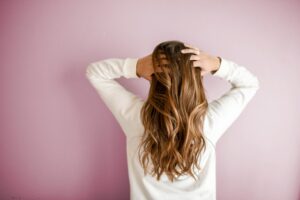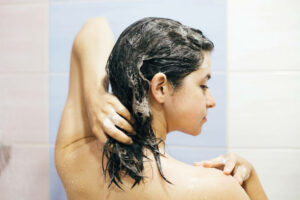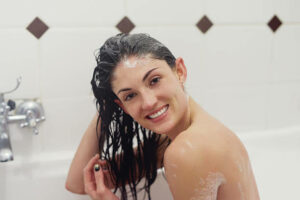Starting a hair care routine is similar to starting a skincare routine. You’ll seldom stray after you’ve discovered one that suits you. However, finding that routine can be difficult, particularly when there are so many options for individuals with the same hair type. Here’s a rundown of everything you need to know about finding the appropriate hair care routine for you.

The final outcome of your routine is determined by a few elements. The feel of your hair, as well as the styles you prefer, will all influence the routine you choose.
The texture or kind of your natural hair
Straight, wavy, curly, and kinky hair varieties are fine, thick, or coarse, and they fall into one of 4 groups: straight, wavy, curly, or kinky. Each one has advantages and disadvantages. Straight hair, for instance, tends to look and feel greasy quicker compared to curly hair owing to oil moving down the hair shaft more quickly.
Whether your hair has been bleached, colored, or chemically altered in any way
If your hair has been exposed to dye, bleach, or chemicals, you may need to reconsider your routine. To avoid early color fading and drying, those with colored hair are recommended not to wash it every day. Furthermore, bleached hair might require additional hydration in the form of conditioner or hair treatments.
On a daily basis, how do you prefer to style your hair?
Are you a fan of straightening your hair? Is it possible to curl it? Why not go for a more natural look? It’s something else to think about, especially if you like to use destructive heat equipment. If you have particular concerns about your hair, whether it’s a flaky scalp, frizz, or dry, damaged strands, it’s natural to find a minimum of one component of your hair bothersome. Half the battle is figuring out what the issue is. The remaining steps entail determining the optimal option.

Basic components for all routines
Though your hair concerns and hair type influence your hair care routine in certain ways, everyone can gain from certain routine tasks.
Cleanse
Cleansing is a delicate balance between eliminating product residue and dead skin while preserving the hair’s natural oils. Sebum can build up if you don’t wash your hair regularly, leaving you with an oily appearance. If not addressed, dead skin will do the same.
The skin regenerates every 28 days, and this can be seen if the hair isn’t kept clean. You also don’t want chlorine on your hair if you’re a frequent swimmer. It has more time to deplete hair of its natural constituents and lead to damage the longer it remains.
Condition
Conditioners have a plethora of advantages. Moisturizing is the most important, although shininess, detangling, and frizz reduction are also important. A cationic surfactant is the major component of a conditioner. When hair is wet, this adheres to it, covering the strands and replenishing the moisture lost by shampoo.

Seal and moisturize
Moisturize and seal is a two-step method that adds more hydration to the hair. This is especially beneficial for kinky or coily hair which is dry. Using a sealing oil and hydrating product, the goal is to seal in moisture rather than dryness.
Detangle
Detangling is critical for preventing breakage and making it makes your life much easier. However, you must use the proper equipment, such as a wide-tooth comb, to avoid accidentally pulling hair out. You might have to detangle each day or much less frequently, depending on your hair type.

Protect and style
You can style your hair in almost any manner you like owing to a variety of tools and tactics including volumizers and gels. If you use heating tools, though, you’ll have to use a heat protection spray to keep those strands safe.
Spot-treat
Spot-treating hair simply entails identifying an area that is irritating you and taking action to address it. For example, if you’re tired of your hair is frizzy, you might try a protein treatment. Or perhaps you’ve observed that your scalp is particularly dry, so you use a specially formulated nourishing cream to that spot.
The sequence of your routine is important, and consistency is essential
Even though the effects of masks and certain style products can be seen right away, you won’t see huge results right away. New products take time for your hair to adjust to. This could take up to a week in some circumstances. However, it may take a minimum of a month for dry or damaged hair to see results.
Heat protection, a mousse or volumizer, and a shine serum must be applied first, followed by a shampoo, conditioner, and any in-shower treatments. After that, dry and style your hair, finishing with a hair gel and hair spray. Ensure your last styling product helps to maintain healthy hair by sealing in moisture.
